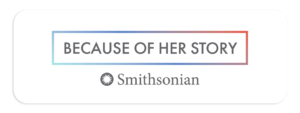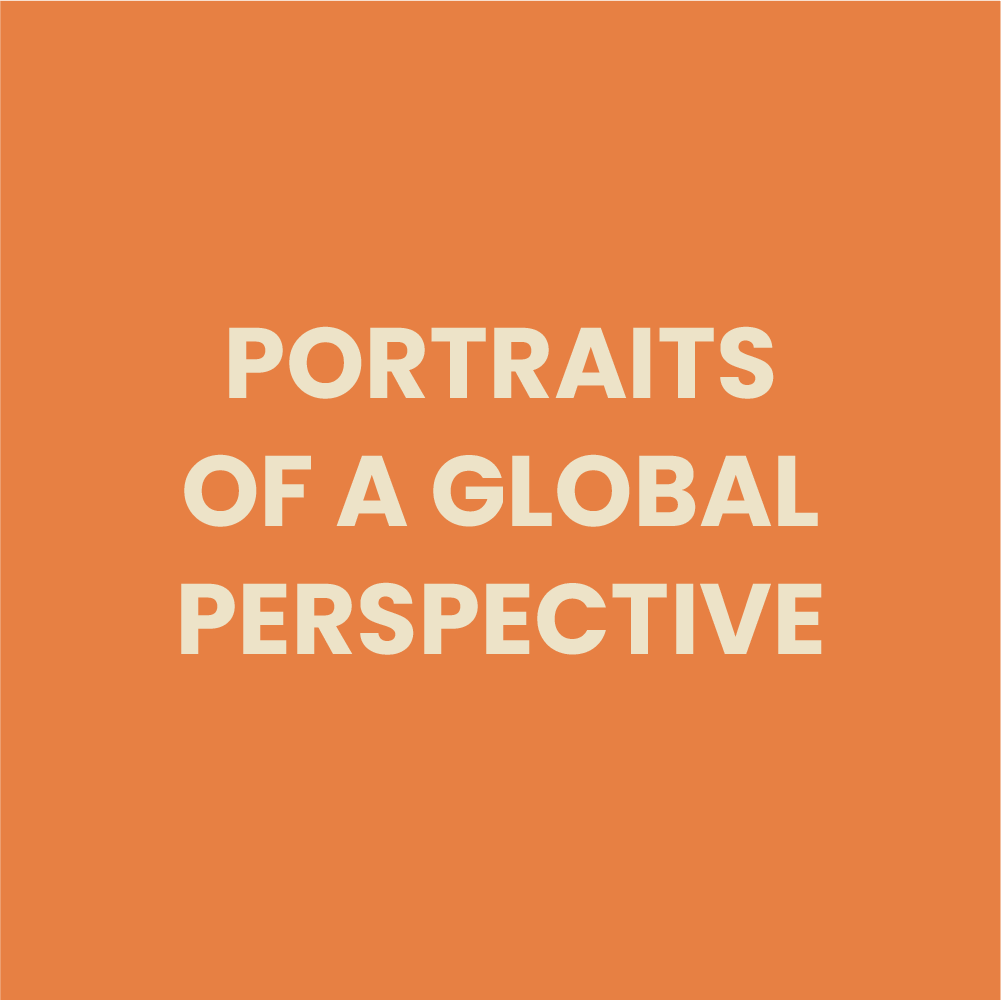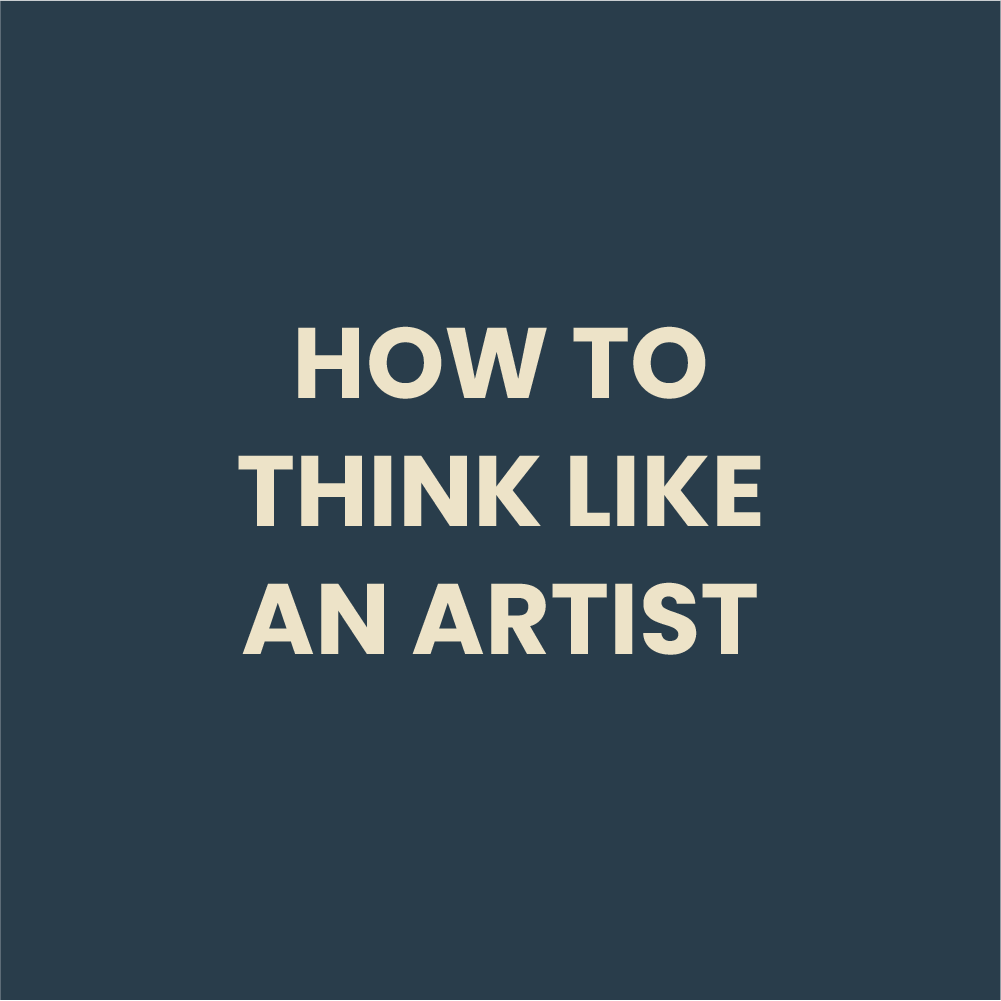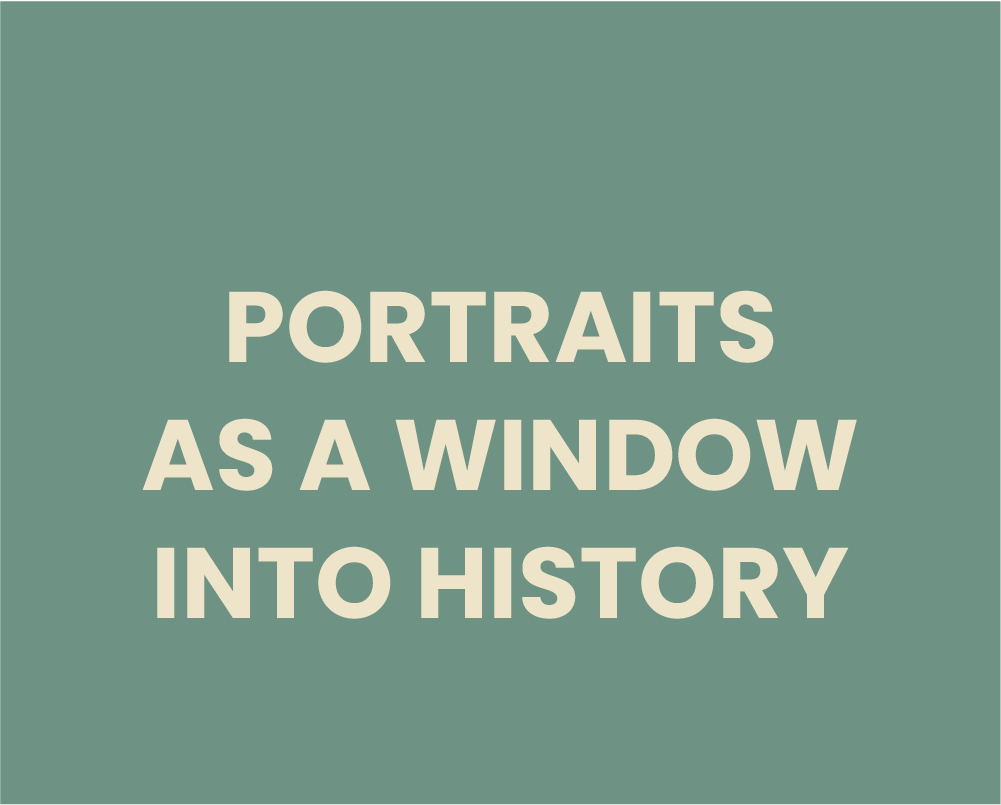
A module series for educators about making art and global interconnections.
What meaningful interconnections can we make with students in our classrooms, and our homes, about important topics around the world?
How can educators and artists collaborate to help our students make these interconnections?
Why is it important for students to think about how they are interconnected with the world?
The Smithsonian Asian Pacific American Center and Smithsonian Center for Learning and Digital Access present Making Art + Global Interconnections, a module series for K12 educators seeking artmaking ideas for the classroom.
In the summer and fall of 2020, four teams of educators, Asian American and Pacific Islander artists, and an art historian came together to learn more about each other's lives, why they teach, why they create art or study art, and what drives their practice. Through these collaborative conversations, ideas for artmaking lessons emerged that entwine the educator’s, the artist’s, and the art historian’s practice and vision, while centering opportunities for students to reflect on their own global interconnections through artmaking.
In this module series you will find four artmaking ideas that can be used in in-person, at-home, and virtual K12 classrooms. Each module includes:
• A copy of the lesson that you can download as a PDF
• Smithsonian Learning Lab collections with images and videos illustrating steps in the artmaking process
• Access to a recorded webinar that introduces you to creators of the lessons and a presentation of how the lessons can be used with students

In this module, educators will access an artmaking lesson appropriate for students in Grades 3 to 5 about creating portraits inspired by a story. This lesson's artmaking steps include letters of the alphabet and accompanying words that address social, emotional, and cultural ideas toward a global perspective.
Let’s meet Shawna and Helen!
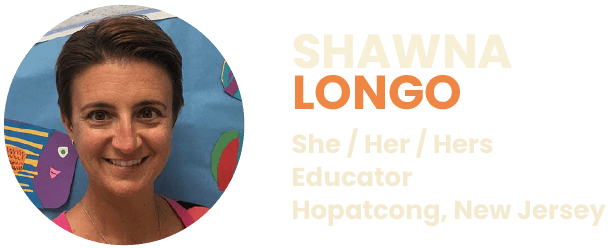
Q: How do you define “arts integration” in your practice as an educator? What kind of impact has arts integration had on your students?
A: I define arts integration as an approach to teaching and learning through which content standards are taught and assessed equitably in and through the arts. Arts integration allows students, regardless of their traditional, academic ability, to show their knowledge and skills through creative and alternative/non-traditional means. This gives space for and encourages students to explore their creative selves and continue to search for connections across arts and non-arts content areas.
Q: What do you hope educators and students will gain from doing this lesson that you and Helen created?
A: I hope that educators and students will increase their global perspective through empathy while building social emotional skills focusing self awareness, social awareness, responsible decision-making, and relationship skills.
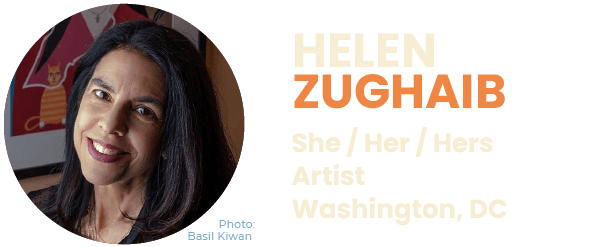
Q: What drives you as an artist?
A: In my work, I am interested in promoting dialogue, mutual understanding and dispelling stereotypes. As an artist, I feel that it is very important to visually document the events we live through, to preserve these stories for future generations to learn from, and hopefully not make the same mistakes, but to grow and make a better world for all of us to live in.
Q: What global interconnections do you hope educators and students make as they do this lesson?
A: I hope that students and teachers come away with the idea of a shared humanity in our global world. The realization that we are more similar than we are not and that these global connections and mutual respect and understanding of one another are the most important elements we can use to create a more peaceful and empathetic world now and in the future.

In this module, educators will access a six-step artmaking process appropriate for secondary school students, encouraging them to think like an artist. This module includes steps on how the artist conducts research to inform their art, and then encourages students to think about a story they want to tell while applying the artist’s research process.
Let’s meet Rachel, Sara, and Kathy!
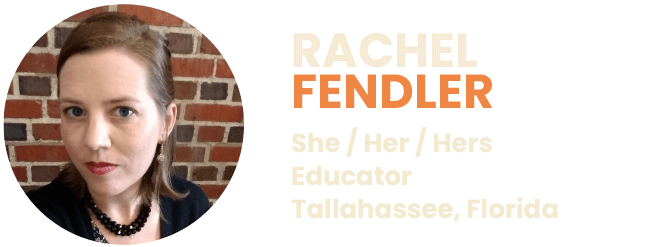
Q: How do you define “Art Education” in your practice as an educator? What kind of impact has art education had on your students?
A: Art education is a practice that asks students to examine their sense of self, sense of place, or sense of community through inquiry and exploration. In the classroom, art education can encourage students to engage in processes of critical thinking and making that can lay the groundwork for civic engagement.
Q: What do you hope educators and students will gain from doing this lesson that you and Kathy created?
A: Our collaboration with Kathy revealed how generative it can be for educators to focus on the artistic process behind that artistic product. Our lesson offers ideas for how to engage students in open-ended inquiries. More concretely, it explores how local histories, materials, and events can be artfully mined to address big ideas.
 Civically Engaged Art Education
Civically Engaged Art Education

Q: How do you define “Art Education” in your practice as an educator? What kind of impact has art education had on your students?
A: For me, art education is an exploration of how the arts can help students understand their identity in relationship to the diverse worlds we teach and live in. I see art classrooms as places to teach towards civic mindedness and socially just encounters with local histories.
Q: What do you hope educators and students will gain from doing this lesson that you and Kathy created?
A: Our work together was focused on the integration of contemporary art, community and personal histories, and how these might work together to create unique opportunities for students to engage in research and artmaking about how big ideas are grounded in their local communities.
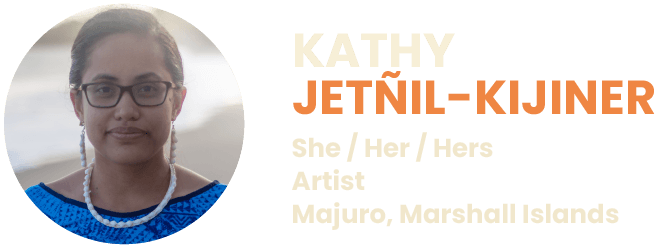
Q: What drives you as an artist?
A: What drives me as an artist is understanding the world around me and trying to heal past and future wounds for myself and for my community. I focus a lot on social justice issues and raising awareness on the issues that have impacted our islands to the rest of the world - climate change and nuclear testing tend to be my first focus.
Q: What global interconnections do you hope educators and students make as they do this lesson?
A: I hope students and educators are able to make connections to the impacts of climate change and nuclear testing in their own communities. But I also hope they understand the importance of connection, of emotion, and honoring indigenous ways of knowing and being.

In this module, educators will access an artmaking lesson appropriate for Grades 3-8 that connects personal memoir and self-expression. The artmaking steps for this lesson include a co-created fabric scroll representing individual identity and classroom community.
Let’s meet Raksha and Monica!
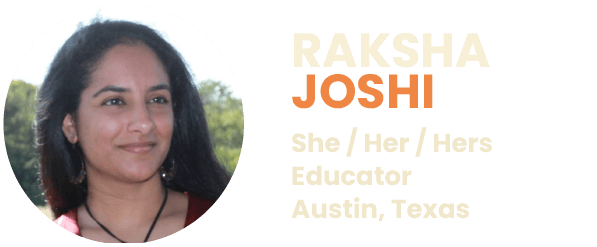
Q: Your school district has partnered with the “Creative Learning Initiative.” What is creative learning and why is this approach important in your practice as an educator?
A: In Austin Independent School District, the Creative Learning Initiative (CLI) focuses on facilitating instructional tasks that require students to make conceptual models, generate ideas, make creative choices, analyze and synthesize, translate and transfer, and contribute perspectives. The most important aspect of using a creative teaching strategy is the reflection on the strategy process which can include individual and group learnings. It is in the reflection that we (the classroom community) truly grow.
Q: What do you hope educators and students will gain from doing this lesson that you and Monica created?
A: I hope educators and students will find meaningful ways to explore and share their own identities and build strong classroom communities. A person’s true identity emerges when given the chance to share the intersectionalities of one’s identity. This lesson helps us learn about one another by melding together our home lives (through the personal object) and our professional lives (by co-creating art as a classroom community).
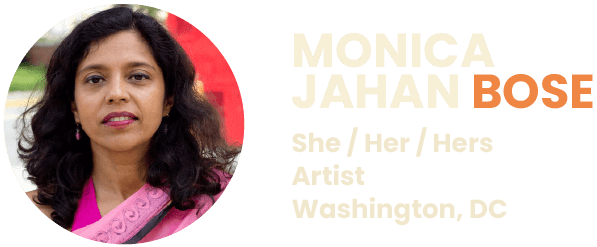
Q: What drives you as an artist?
A: I am inspired when my work has an impact on people, and when viewers of my work become active participants. I am driven by the belief that when we hear each other and can come together to create collective art, this leads to a greater sense of community so that we can tackle the big challenges of our time, such as climate change and racial and gender justice. Connecting with others and learning from each other is what drives my creativity and my artistic work.
Q: What global interconnections do you hope educators and students make as they do this lesson?
A: I hope that the students and educators will be inspired by the way artists have used different languages, garments, and objects to express their multiple identities and their links to others around the globe. The students might incorporate their own families’ stories of migration, whether by force or by choice, along with different languages and personal objects, some of which may have roots in other places. I hope that through this lesson, the students will learn more about each other and create a sense of community and connectedness within the classroom and beyond.
Storytelling With Saris: 



In this module, educators will access an artmaking lesson appropriate for students in Grades 5 and up, using portraiture as a way to explore personal identity. This lesson encourages students to look at a portrait of a historical figure and examine symbols. Students will then create their portrait, incorporate personal symbols, and write an artist statement.
Let’s meet Alicia and Healoha!
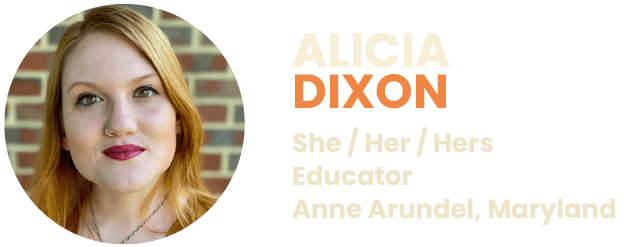
Q: How do you define “arts integration” in your practice as an educator? What kind of impact has arts integration had on your students?
A: I would define arts integration as teaching a standard from my core content along with an art standard, in order to get my students thinking critically and creatively. I have students, with little classroom enthusiasm, show up and reveal their personalities and talents through my arts integration lessons; those are my favorite days.
Q: What do you hope educators and students will gain from doing this lesson that you and Healoha created?
A: I hope that teachers get an idea of what it looks like to provide space for both the content and the students as individual people. I hope that students will see themselves reflected in this lesson and look for more opportunities to find themselves in other contents in their studies.
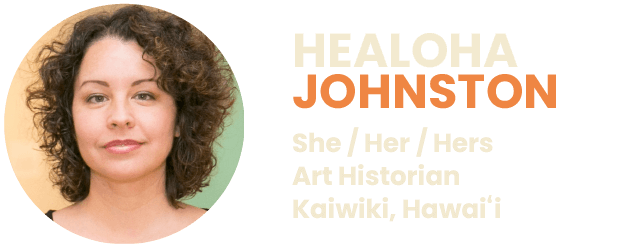
Q: What drives you as an art historian?
A: There are so many stories to tell and so many different ways to tell them! Approaching the world through visual culture and art history opens up so many artistic perspectives, different ways of knowing, and untold yet epic stories that can be understood in visceral, intellectual, and creative terms. Empowering people today to interpret aspects of their personal experience through the inspiring visual legacies of our past, and encouraging people to look to contemporary artists as thought leaders who can help us make sense of the present moment drive me as an art historian.
Q: What global interconnections do you hope educators and students make as they do this lesson?
A: I hope educators and students will appreciate how people across time periods and geographies respond to their unique circumstance and environment with ingenuity, fortitude, and brilliance.
A new module series for educators about making art and global interconnections.
What meaningful interconnections can we make with students in our classrooms, and our homes, about important topics around the world?
How can educators and artists collaborate to help our students make these interconnections?
Why is it important for students to think about how they are interconnected with the world?
The Smithsonian Asian Pacific American Center and Smithsonian Center for Learning and Digital Access is proud to present Making Art + Global Interconnections, a new module series for K12 educators seeking new ideas for the classroom that weave together the processes of art-making and understanding our interconnections to topics and issues around the world.
Over the course of the summer and fall of 2020, four teams of educators, Asian American and Pacific Islander artists and an art historian came together to learn more about each other's' lives, why they teach, why they create art or study art, what drives their practice, and what is important to them right now. Through these collaborative conversations, ideas for new art-making lessons emerged that entwine the educator’s, the artist’s, and the art historian’s practice and vision, while centering opportunities for students to reflect on their own global interconnections through art making.
In this module series you will find four new art-making ideas that can be implemented in in-person, at-home, and/or virtual K12 classrooms. Each module includes:
• A copy of the lesson that you can download as a PDF
• Smithsonian Learning Lab collections with images of each step in the art-making process
• Access to a webinar that introduces you to creators of the lessons and a presentation of how the lessons can be done with students
The lesson and Learning Lab collections will be available on the day of the webinars, and will live on this page after the webinars are over. All webinars will be recorded and posted on this page.
What is each module about?
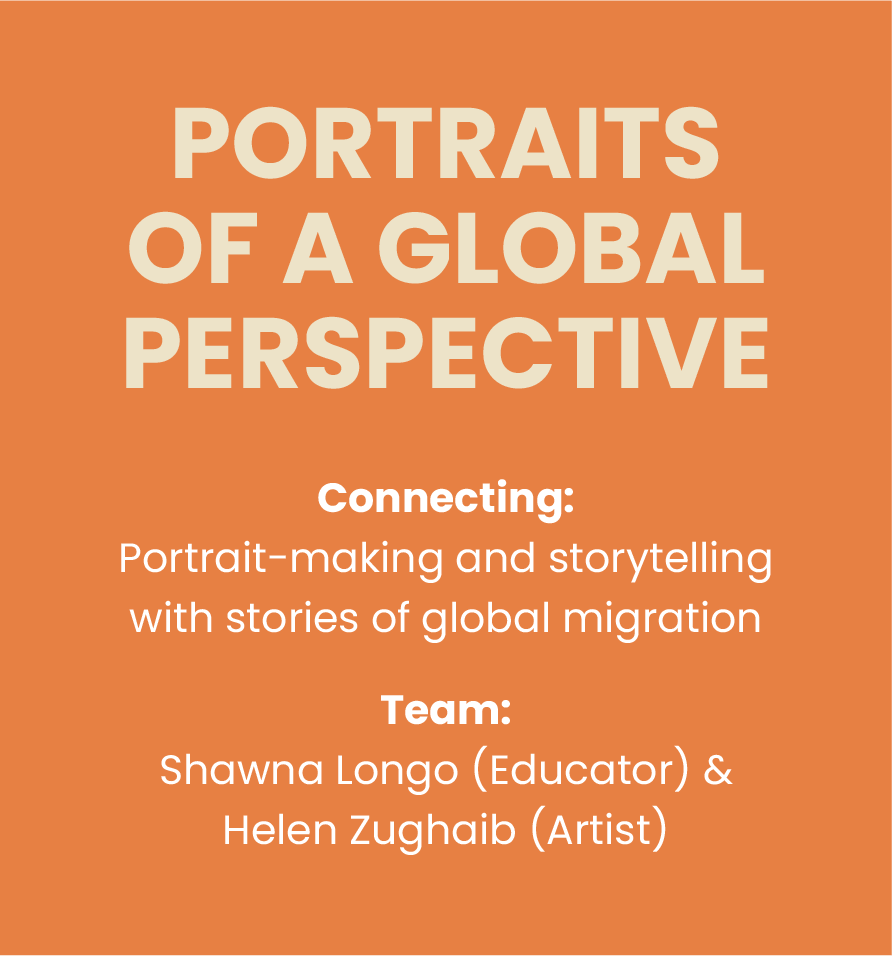
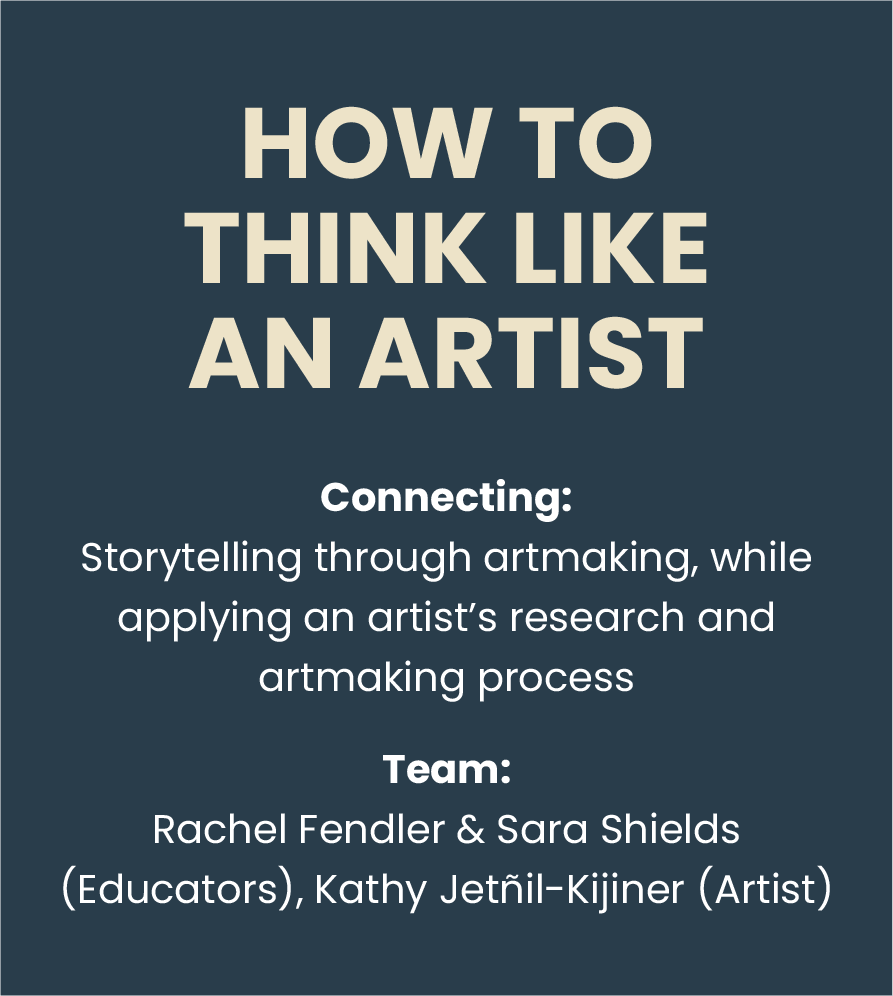
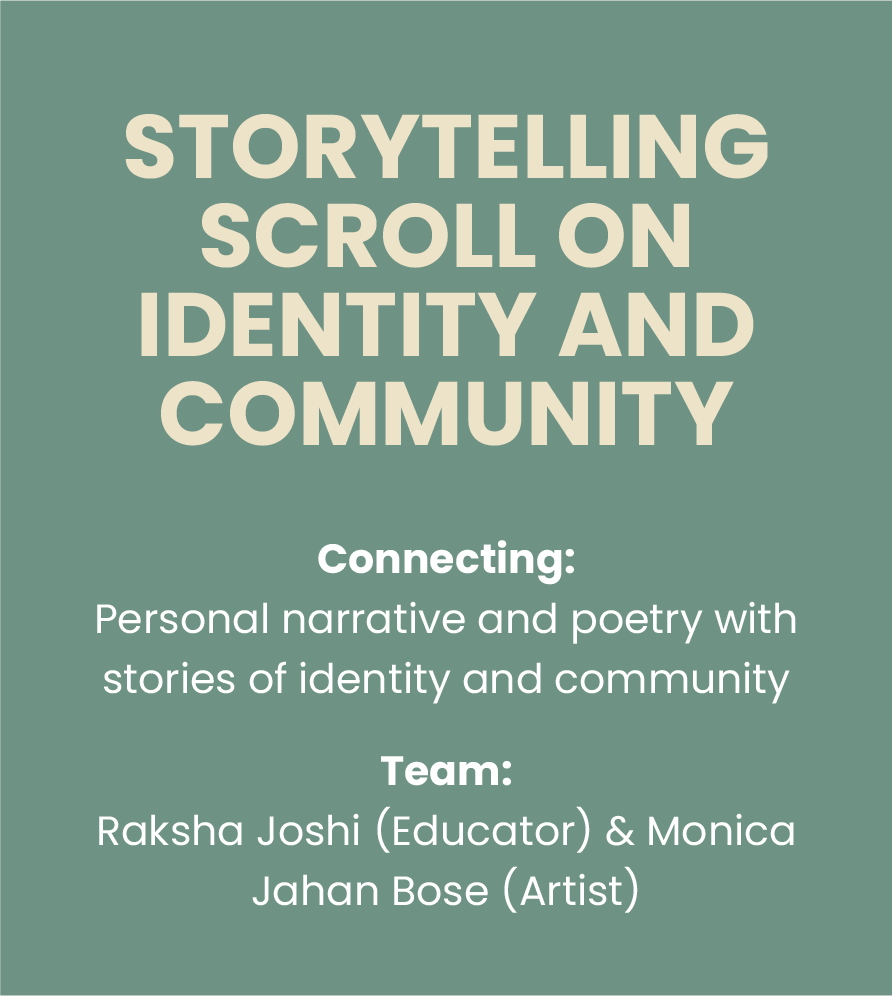
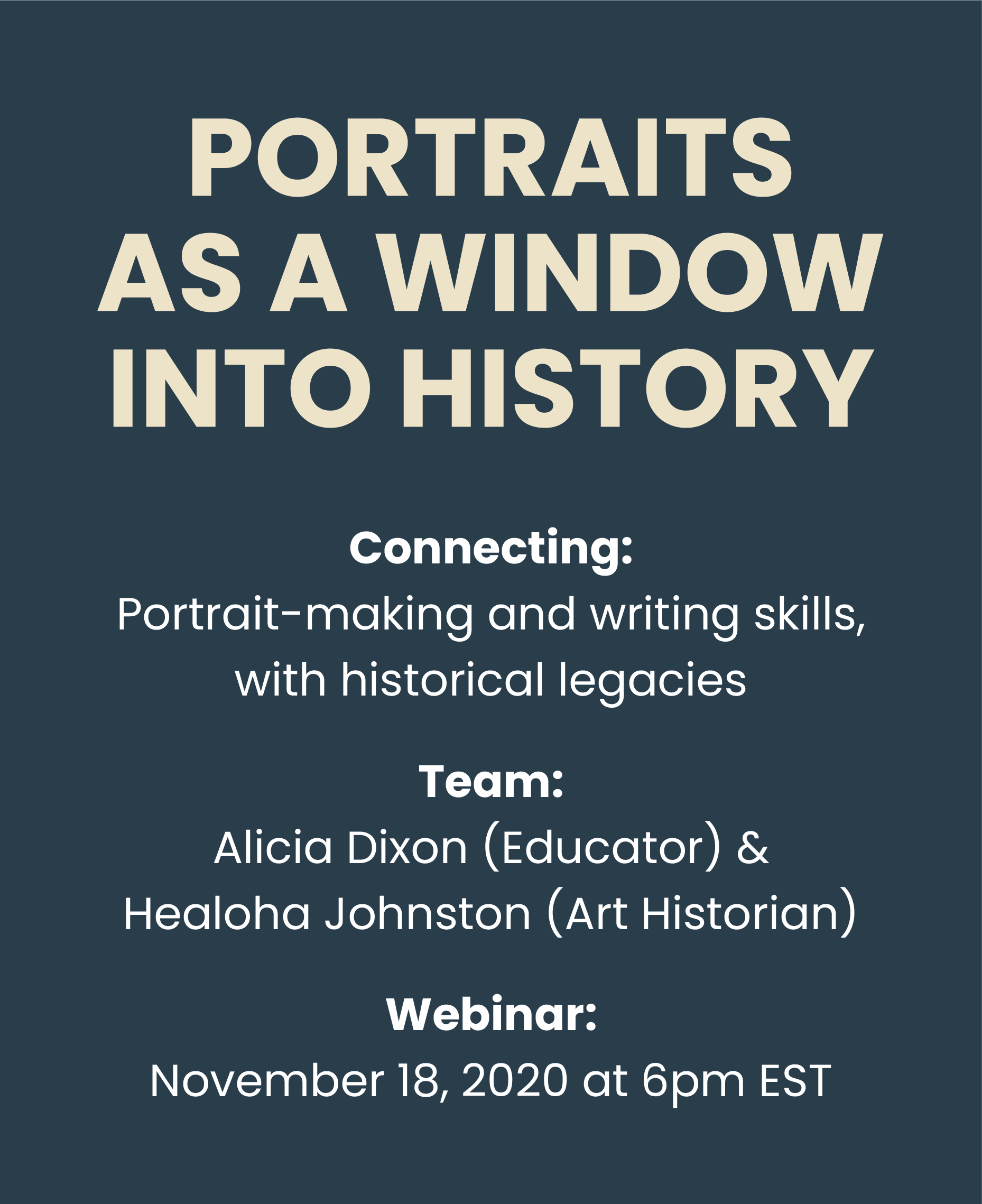
More details below!
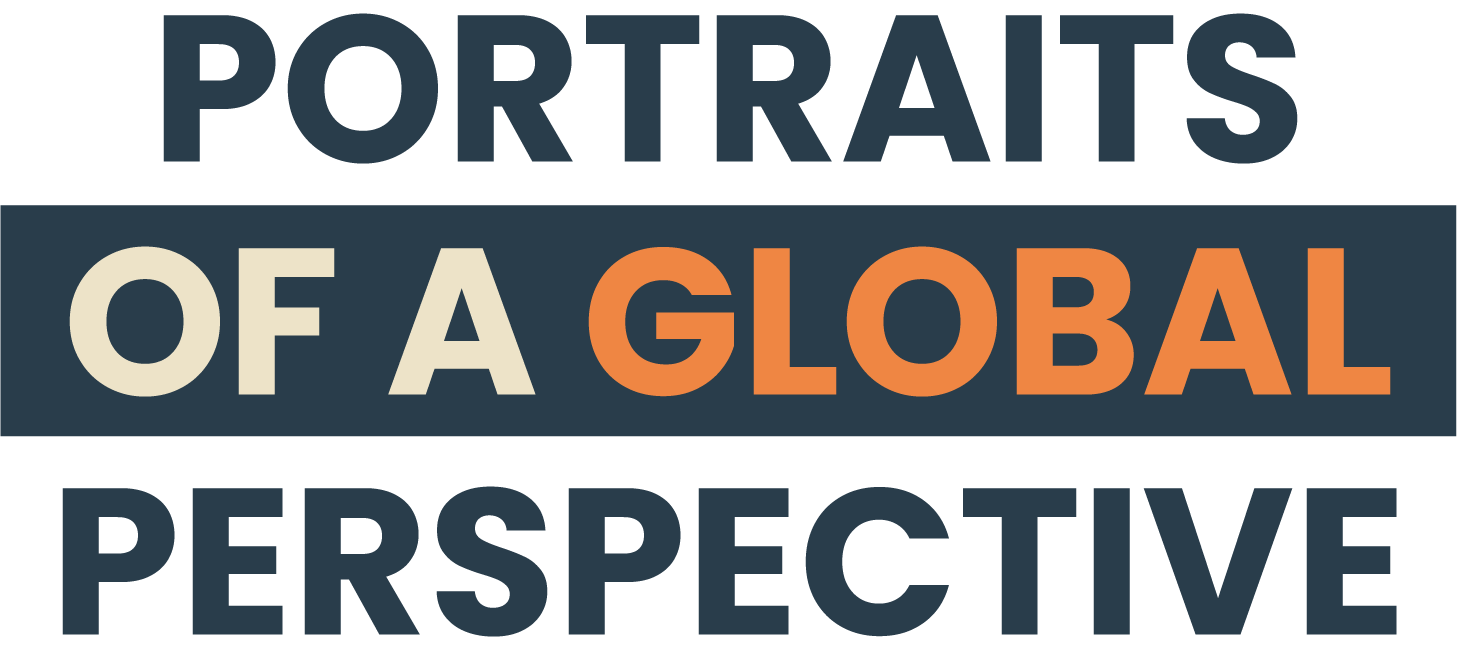
In this module, educators will access an art-making lesson appropriate for students in Grades 3 to 5 about creating portraits inspired by a story. This lesson's art-making steps include letters of the alphabet and accompanying words that address social, emotional, and cultural ideas toward a global perspective.
Let’s meet Shawna and Helen!

Q: How do you define “arts integration” in your practice as an educator? What kind of impact has arts integration had on your students?
A: I define arts integration as an approach to teaching and learning through which content standards are taught and assessed equitably in and through the arts. Arts integration allows students, regardless of their traditional, academic ability, to show their knowledge and skills through creative and alternative/non-traditional means. This gives space for and encourages students to explore their creative selves and continue to search for connections across arts and non-arts content areas.
Q: What do you hope educators and students will gain from doing this lesson that you and Helen created?
A: I hope that educators and students will increase their global perspective through empathy while building social emotional skills focusing self awareness, social awareness, responsible decision-making, and relationship skills.

Q: What drives you as an artist?
A: In my work, I am interested in promoting dialogue, mutual understanding and dispelling stereotypes. As an artist, I feel that it is very important to visually document the events we live through, to preserve these stories for future generations to learn from, and hopefully not make the same mistakes, but to grow and make a better world for all of us to live in.
Q: What global interconnections do you hope educators and students make as they do this lesson?
A: I hope that students and teachers come away with the idea of a shared humanity in our global world. The realization that we are more similar than we are not and that these global connections and mutual respect and understanding of one another are the most important elements we can use to create a more peaceful and empathetic world now and in the future.
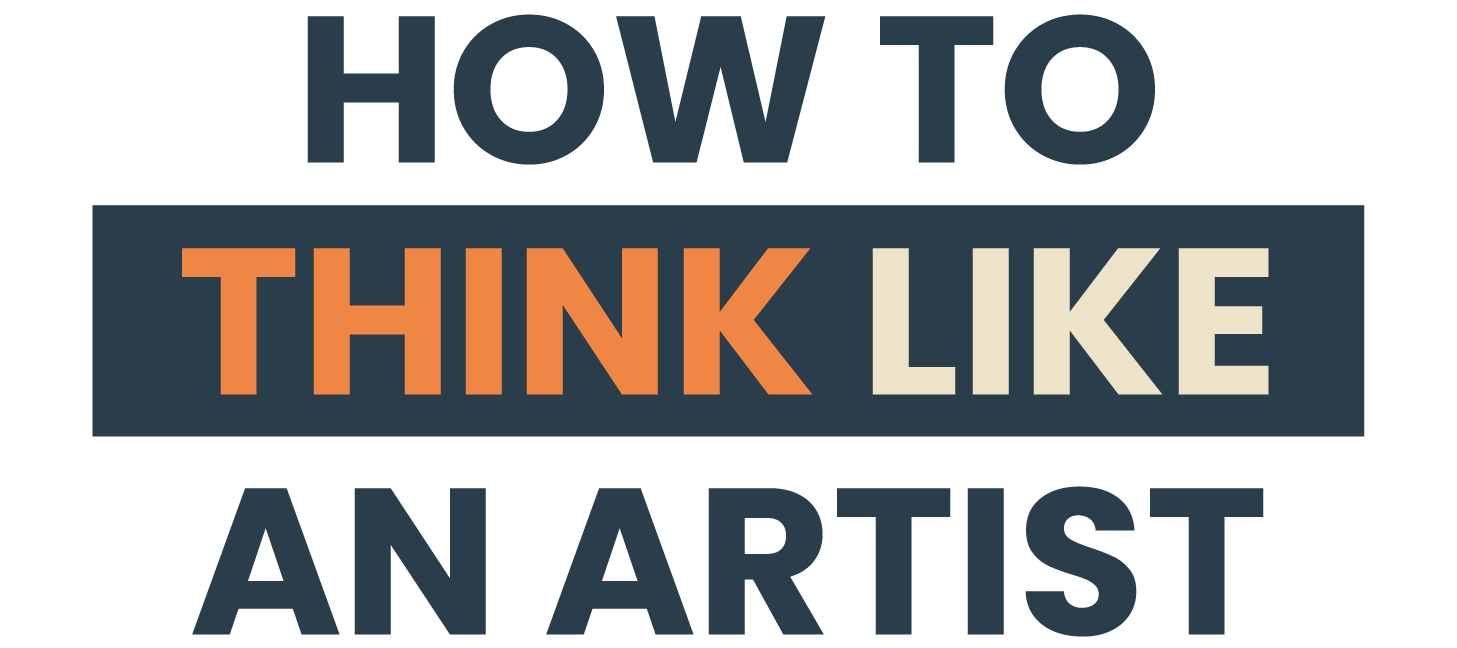
In this module, educators will access a six-step art-making process appropriate for secondary school students, encouraging them to think like an artist. This module includes steps on how the artist conducts research to inform their art, and then encourages students to think about a story they want to tell while applying the artist’s research process.
Let’s meet Rachel,
Sara, and Kathy!

Q: How do you define “Art Education” in your practice as an educator? What kind of impact has art education had on your students?
A: Art education is a practice that asks students to examine their sense of self, sense of place, or sense of community through inquiry and exploration. In the classroom, art education can encourage students to engage in processes of critical thinking and making that can lay the groundwork for civic engagement.
Q: What do you hope educators and students will gain from doing this lesson that you and Kathy created?
A: Our collaboration with Kathy revealed how generative it can be for educators to focus on the artistic process behind that artistic product. Our lesson offers ideas for how to engage students in open-ended inquiries. More concretely, it explores how local histories, materials, and events can be artfully mined to address big ideas.
 Civically Engaged Art Education
Civically Engaged Art Education

Q: How do you define “Art Education” in your practice as an educator? What kind of impact has art education had on your students?
A: For me, art education is an exploration of how the arts can help students understand their identity in relationship to the diverse worlds we teach and live in. I see art classrooms as places to teach towards civic mindedness and socially just encounters with local histories.
Q: What do you hope educators and students will gain from doing this lesson that you and Kathy created?
A: Our work together was focused on the integration of contemporary art, community and personal histories, and how these might work together to create unique opportunities for students to engage in research and artmaking about how big ideas are grounded in their local communities.

Q: What drives you as an artist?
A: What drives me as an artist is understanding the world around me and trying to heal past and future wounds for myself and for my community. I focus a lot on social justice issues and raising awareness on the issues that have impacted our islands to the rest of the world - climate change and nuclear testing tend to be my first focus.
Q: What global interconnections do you hope educators and students make as they do this lesson?
A: I hope students and educators are able to make connections to the impacts of climate change and nuclear testing in their own communities. But I also hope they understand the importance of connection, of emotion, and honoring indigenous ways of knowing and being.

Q: Your school district has partnered with the “Creative Learning Initiative.” What is creative learning and why is this approach important in your practice as an educator?
A: In Austin Independent School District, the Creative Learning Initiative (CLI) focuses on facilitating instructional tasks that require students to make conceptual models, generate ideas, make creative choices, analyze and synthesize, translate and transfer, and contribute perspectives. The most important aspect of using a creative teaching strategy is the reflection on the strategy process which can include individual and group learnings. It is in the reflection that we (the classroom community) truly grow.
Q: What do you hope educators and students will gain from doing this lesson that you and Monica created?
A: I hope educators and students will find meaningful ways to explore and share their own identities and build strong classroom communities. A person’s true identity emerges when given the chance to share the intersectionalities of one’s identity. This lesson helps us learn about one another by melding together our home lives (through the personal object) and our professional lives (by co-creating art as a classroom community).

Q: What drives you as an artist?
A: I am inspired when my work has an impact on people, and when viewers of my work become active participants. I am driven by the belief that when we hear each other and can come together to create collective art, this leads to a greater sense of community so that we can tackle the big challenges of our time, such as climate change and racial and gender justice. Connecting with others and learning from each other is what drives my creativity and my artistic work.
Q: What global interconnections do you hope educators and students make as they do this lesson?
A: I hope that the students and educators will be inspired by the way artists have used different languages, garments, and objects to express their multiple identities and their links to others around the globe. The students might incorporate their own families’ stories of migration, whether by force or by choice, along with different languages and personal objects, some of which may have roots in other places. I hope that through this lesson, the students will learn more about each other and create a sense of community and connectedness within the classroom and beyond.
Storytelling With Saris:
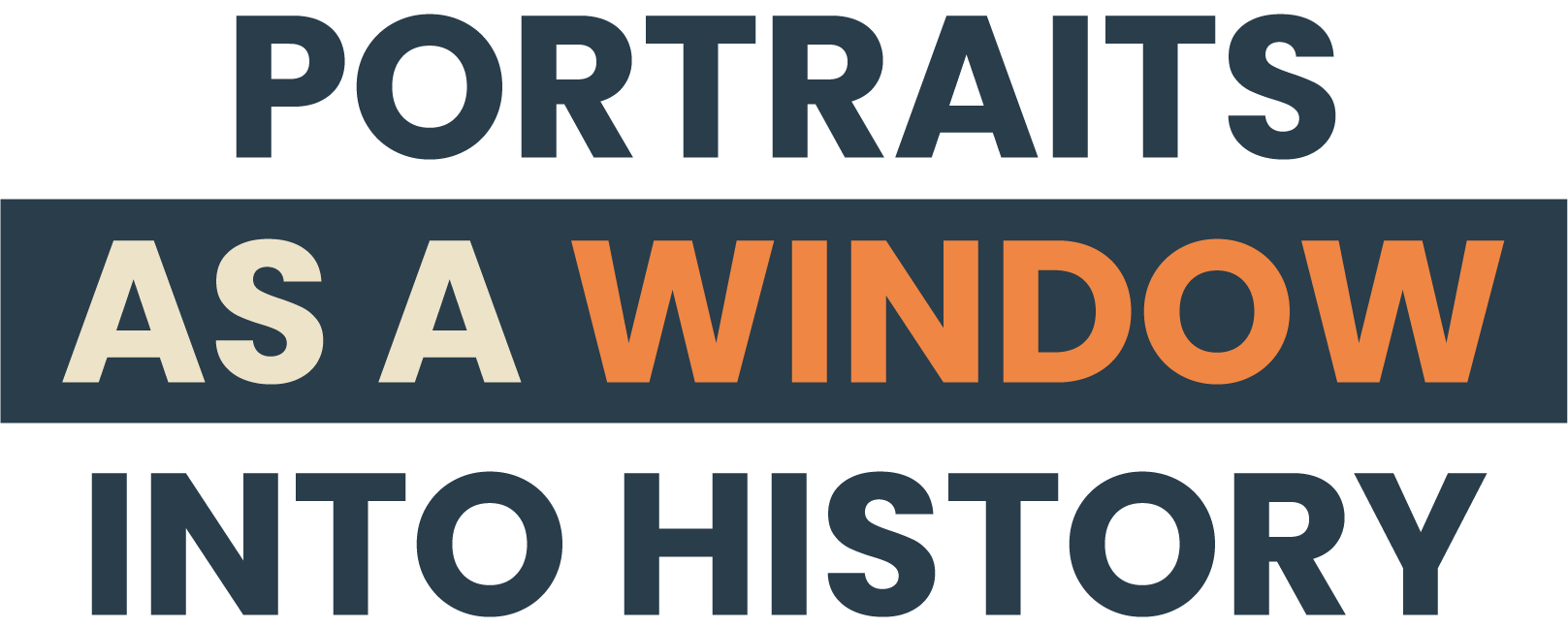
In this module, educators will access an art-making lesson appropriate for students in Grades 5 and up, using portraiture as a way to explore personal identity. This lesson encourages students to look at a portrait of a historical figure and examine symbols. Students will then create their portrait, incorporate personal symbols, and write an artist statement.
Let’s meet Alicia and Healoha!

Q: How do you define “arts integration” in your practice as an educator? What kind of impact has arts integration had on your students?
A: I would define arts integration as teaching a standard from my core content along with an art standard, in order to get my students thinking critically and creatively. I have students, with little classroom enthusiasm, show up and reveal their personalities and talents through my arts integration lessons; those are my favorite days.
Q: What do you hope educators and students will gain from doing this lesson that you and Healoha created?
A: I hope that teachers get an idea of what it looks like to provide space for both the content and the students as individual people. I hope that students will see themselves reflected in this lesson and look for more opportunities to find themselves in other contents in their studies.


